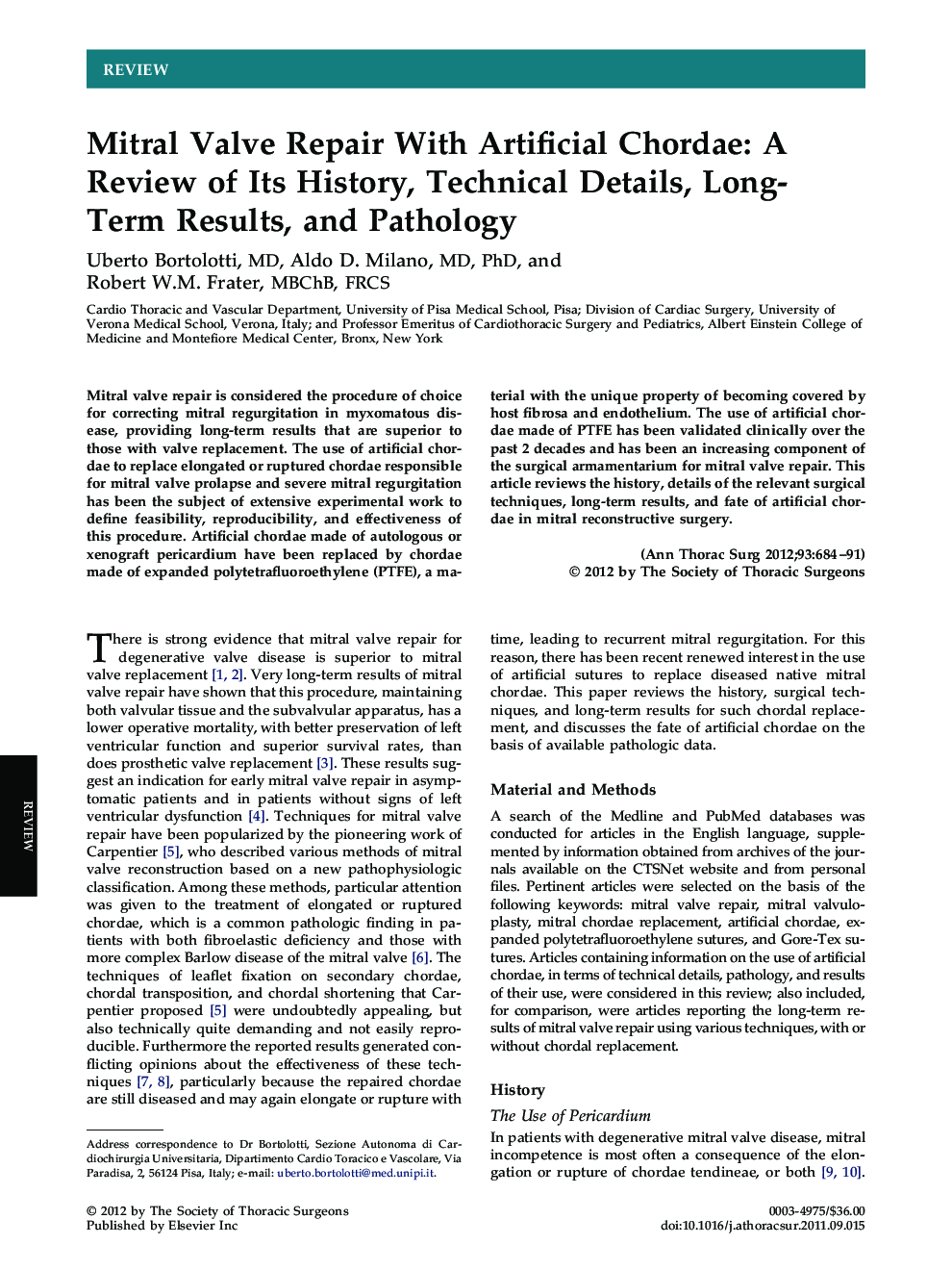| Article ID | Journal | Published Year | Pages | File Type |
|---|---|---|---|---|
| 2877096 | The Annals of Thoracic Surgery | 2012 | 8 Pages |
Abstract
Mitral valve repair is considered the procedure of choice for correcting mitral regurgitation in myxomatous disease, providing long-term results that are superior to those with valve replacement. The use of artificial chordae to replace elongated or ruptured chordae responsible for mitral valve prolapse and severe mitral regurgitation has been the subject of extensive experimental work to define feasibility, reproducibility, and effectiveness of this procedure. Artificial chordae made of autologous or xenograft pericardium have been replaced by chordae made of expanded polytetrafluoroethylene (PTFE), a material with the unique property of becoming covered by host fibrosa and endothelium. The use of artificial chordae made of PTFE has been validated clinically over the past 2 decades and has been an increasing component of the surgical armamentarium for mitral valve repair. This article reviews the history, details of the relevant surgical techniques, long-term results, and fate of artificial chordae in mitral reconstructive surgery.
Related Topics
Health Sciences
Medicine and Dentistry
Cardiology and Cardiovascular Medicine
Authors
Uberto MD, Aldo D. MD, PhD, Robert W.M. MBChB, FRCS,
